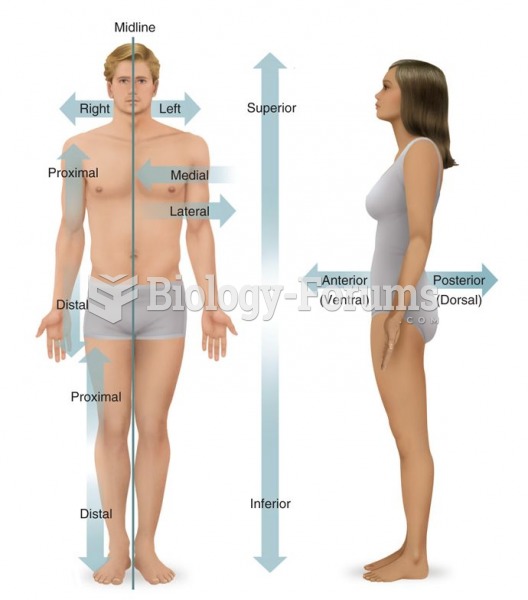|
|
|
Addicts to opiates often avoid treatment because they are afraid of withdrawal. Though unpleasant, with proper management, withdrawal is rarely fatal and passes relatively quickly.
Only one in 10 cancer deaths is caused by the primary tumor. The vast majority of cancer mortality is caused by cells breaking away from the main tumor and metastasizing to other parts of the body, such as the brain, bones, or liver.
Approximately one in four people diagnosed with diabetes will develop foot problems. Of these, about one-third will require lower extremity amputation.
No drugs are available to relieve parathyroid disease. Parathyroid disease is caused by a parathyroid tumor, and it needs to be removed by surgery.
The heart is located in the center of the chest, with part of it tipped slightly so that it taps against the left side of the chest.
 In-line blending is the most accurate method for blending ethanol with gasoline because computers ...
In-line blending is the most accurate method for blending ethanol with gasoline because computers ...
 A typical two-line cleaning machine hookup, showing an extension hose that can be used to squirt a ...
A typical two-line cleaning machine hookup, showing an extension hose that can be used to squirt a ...





